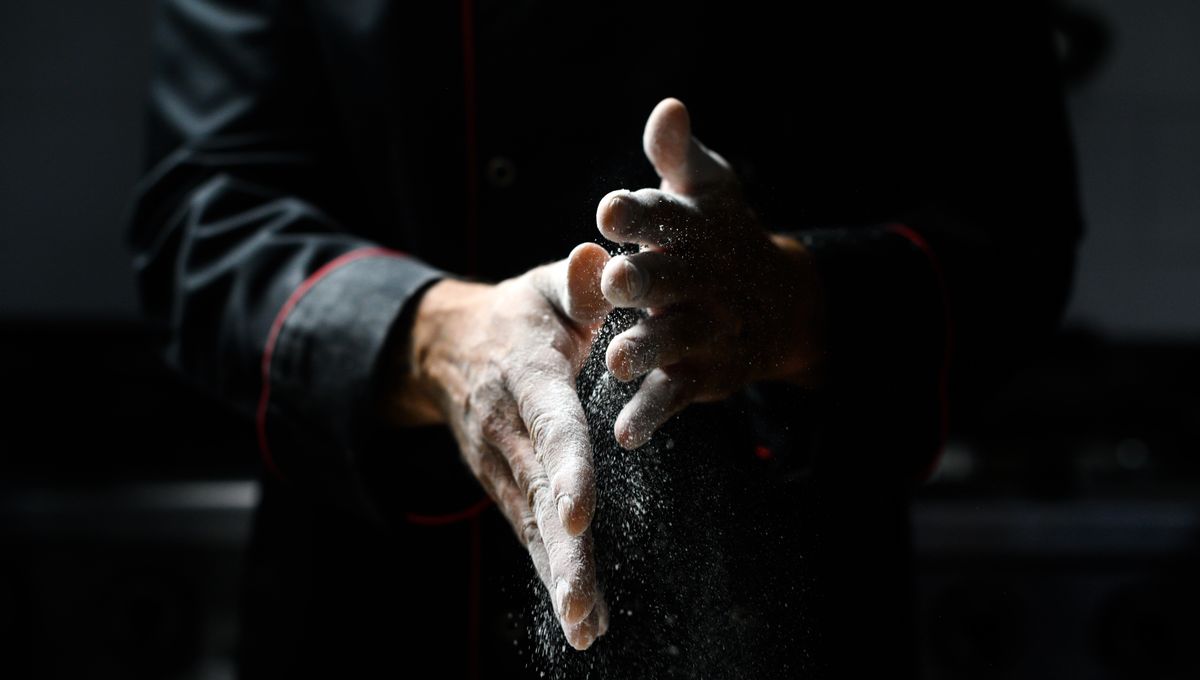
This is a very important public service announcement: flour can explode. Yes, we are talking about that stuff you keep in the room where you’re most likely to find fire. Thankfully, you probably don’t need to panic about your kitchen going up in flames, but it still pays to know about the dangers of dust explosions – lucky we’re here, then, isn’t it?
In 1981, there was an explosion at a factory run by General Foods Ltd., in Banbury, Oxfordshire, UK. Among the dry foods produced at the factory was custard powder, which required huge quantities of cornstarch – a finely ground powdery substance, you’ll note, much like flour.
One Wednesday evening, things started to go wrong when one of the bins holding the cornstarch was overfilled. A government inspector’s report explains how workers noticed a cloud of starch escaping before it suddenly ignited, spreading like “a gale force wind with a flame front behind”. Nine men were injured in the accident, with eight requiring treatment at a specialist burns unit, and there was extensive damage to the building.
This incident, and many others like it, underscore the hazards that dust can pose. Flour is one example that’s used in the production of lots of foods, but the risk is there with any carbohydrate-rich powder, such as sugar or coffee creamer.
Extensive health and safety measures are put in place to try to mitigate this risk in the food industry – but unless you’re planning on opening a commercial bakery in your back room, you’re unlikely to have enough flour around at home to create an explosive cloud.
Why is flour so combustible?
Time for the science bit – that is why you’re here, after all. There are five things you need for a dust explosion to occur:
- Fuel (i.e. your flour or other dust)
- Oxygen
- Heat
- Confinement
- Dispersion
Carbohydrates burn – as anyone who has ever made a s’more will tell you – but the problems don’t really start until you have a cloud of flour dust particles in a confined space.
Smaller grains of flour have a large surface area-to-mass ratio, meaning they can burn much faster than larger grains. With plenty of oxygen around them as they hang in the air, all it takes is a little spark of heat (remember the fire triangle?) to ignite the particles.
The heat might come from an actual flame or be generated from the friction produced in the grinding process. With a high enough concentration of flour particles in the cloud, as each particle burns the dust is stirred up, setting more alight until you have all the ingredients for an explosion.
How to handle flour safely
At home in your kitchen, as long as you’re not chucking bags of flour into the air and then lighting a match – seriously, do not do this – then the risk of a dust fire or explosion is very low.
In industrial settings that handle large quantities of combustible powders, control methods include using special vacuum cleaners to suck up excess dust, regular checks for dust residue in hard-to-reach places, and strict controls on naked flames and anything that might generate static electricity.
And just one last point to mention. You may have seen a dry powder fire extinguisher before – they’re sometimes called ABC extinguishers, because they’re suitable for use on type A (solid), type B (liquid), and type C (gas) fires, as well as some electrical fires.
A little birdy (the internet) tells us that some people are spreading the misinformation that a handful of flour can work just as well if you don’t have an ABC extinguisher to hand. Hopefully, you’ve learned by now why this would be a very bad idea indeed, but to be totally clear: flour is a fire hazard. Do not throw flour onto a fire.
Stay safe out there, folks!
Source Link: Flour Can Explode, And It’s Important That You Know That